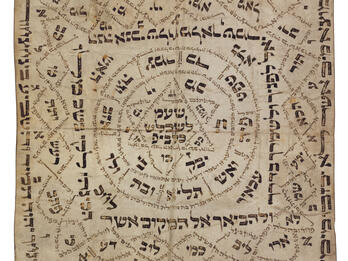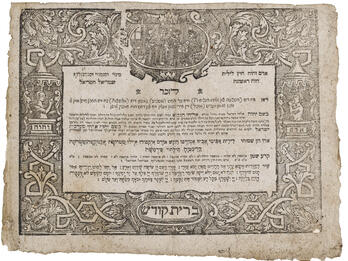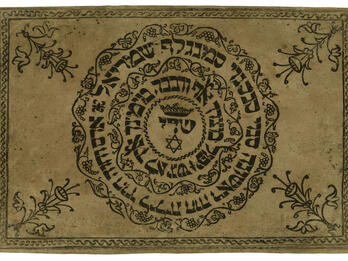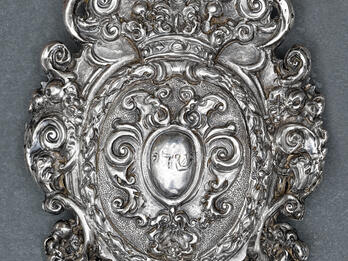Compendium of Practical Kabbalah
This remarkable manuscript of practical kabbalah was written in Eastern Europe in the mid-eighteenth century; at the end of that century it was owned by the Radvil Hasidic dynasty. In contrast to contemplative kabbalah, which seeks to understand human relationships with the divine and includes meditative techniques to achieve this, practical kabbalists used incantations and written formulas that contain divine and angelic names for a range of (magical) purposes, from healing and protection to exorcising evil spirits. This compendium, which draws on medieval kabbalistic sources, Arabic and Spanish traditions, as well as the Lurianic kabbalah, was written in Hebrew, but it also contains some sections in Yiddish and angelic letters. Its almost three thousand formulas include instructions on how to make amulets, magical rings, and even a golem, and the work contains rare kabbalistic diagrams and materials unknown from other sources. It also contains one of the earliest mentions of Israel Ba‘al Shem Tov, the Besht, the founder of the Hasidic movement. Scholars suggest that the compendium may represent the Besht’s own kabbalistic practices and thus constitute an important source for understanding early Hasidism.
Credits
Published in: The Posen Library of Jewish Culture and Civilization, vol. 5.


![M10 622 Manuscript, probably from Ukraine]. Manuscript probably from Ukraine, c. 1740 with a broad collection of practical kabbalah and mystical magic. Facing page manuscript arranged vertically with Hebrew text in the shape of a figure wielding two long objects.](/system/files/styles/prose_image_x2/private/images/vol05/Posen5_blackandwhite166_color.jpg?itok=ikDMt_bG)

!["9. [Image: M9 637 Seder tefilot yesharot u-varot]. Seder Tefilot Yesharot u-barot " Manuscript page of Hebrew text arranged in the shape of a eight-branched candelabrum.](/system/files/styles/entry_card_sm_1x/private/images/vol05/Posen5_blackandwhite165_color.jpg?h=31fc6cc8&itok=ER5JfABc)


![14. [Image: M14 626 An amulet for a newly born female child] Printed page with Hebrew text in the middle surrounded by floral design and figures.](/system/files/styles/entry_card_sm_1x/private/images/vol05/Posen5_blackandwhite169_color.jpg?h=55b496cd&itok=ZMzRFnve)

